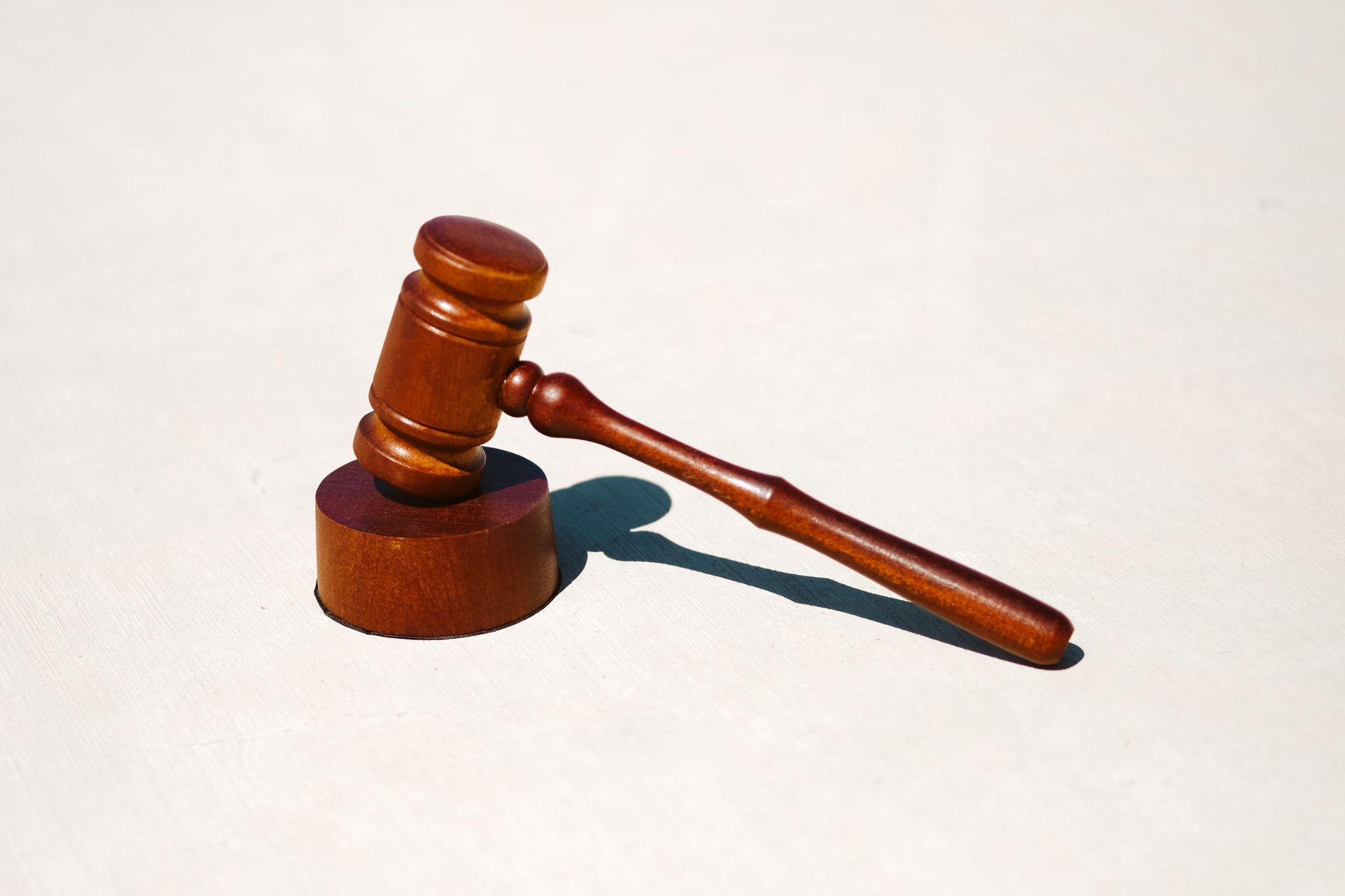
“The Rule of Law and the Importance of Disabled Voices in the Legal Profession” is the tenth article in a series on intersections between business law and the rule of law, and their importance for business lawyers, created by the American Bar Association Business Law Section’s Rule of Law Working Group. Read more articles in the series.
The Law involves a great amount of problem-solving.[1] “The Rule of Law comprises a number of principles of a formal and procedural character”[2] that guide this problem-solving process. These “formal principles concern the generality, clarity, publicity, stability, and prospectivity of the norms that govern a society.”[3] The Rule of Law, therefore, is essentially a framework for problem-solving that works to ensure more stable, predictable, and fair rules. However, stable, predictable, and fair—for whom?
There is universal agreement that the principle of equality before the law is a key component of the Rule of Law framework. Questions and conflicts abound, however, about what equality means and how it is to be achieved. Most people know that advancing the rule of law is a part of the American Bar Association’s mission. However, not many lawyers fully understand how (and even whether) including diverse voices within the legal profession advances the Rule of Law. This article gathers some perspective on the importance of empowering lawyers with disabilities, collected from the leadership of the ABA Business Law Section. It focuses on why and how including diverse voices in the legal profession, especially voices of people with disabilities, advances the rule of law.
Juan M. Sempertegui is a former chair of the BLS Lawyers of Color Subcommittee and a former president of the Hispanic Bar Association of the District of Columbia. When speaking of the importance of representation of people with disabilities within the legal profession, Mr. Sempertegui affirms that “so much about a lawyer’s job is to solve problems.” He notes that “how you solve those problems is based on your perspective towards the issues at hand. Someone with a disability, for example, has a new perspective; they look at issues and products in a different way than someone without a disability.” Moreover, Mr. Sempertegui has found that the differences in perspective held by individuals with disabilities grant them a unique problem-solving ability that is of great importance to the legal field.
Anat Maytal, a former chair of the Lawyers with Disabilities Subcommittee, views such inclusivity as benefiting not only clients, by creating a wider range of perspectives, but also fellow attorneys. Primarily she affirms that the experiences of people with disabilities contribute different, and necessary voices in the law. People who face disabilities, whether they have experienced them from birth or a young age, or have had to come to terms with them later in life, “[w]e have been exposed to many more situations where we have to deal with obstacles, where we have to advocate for ourselves, and find new solutions.” As a result, “one thing we bring to the table is that we face so many challenges and overcome them by figuring out what kind of workarounds we can get. We persevere.”
Ms. Maytal points out that in the legal field, things are not always going to go as planned. The opposing counsel is going to come at you with things you may not have anticipated, and you need to be able to think on your feet; you need to know that the normal way of doing things isn’t going to work. “For the disabled community, the regular way has never worked, so we always had to think, what’s another way that we can make this happen? You need that voice.” Furthermore, Ms. Maytal describes personal anecdotes where accommodations put in place by the disabled community also benefit able-bodied lawyers. For example one accommodation she requests in court is to have real-time captioning, or transcription of what is being said in real time. She explains that “the accommodations that we are talking about now, a lot of people who are not disabled appreciate for themselves. People who are able-bodied tell me ‘thank you’” for making them aware of those accommodations, she says, and sometimes even request it for themselves.
Ms. Maytal continues, “The pandemic has really done a lot of things for people who practice law and have disabilities, with getting people accommodations they need. If you have a mobility issue, you would still be required to come into the office… if you had a hearing disability, like me, you still had to shift to Zoom. At first, I thought it would be challenging, and it is, but I learned very quickly that I actually excel on this kind of platform where I can see everyone’s faces. On Zoom only one person can talk at a time. So, I am less likely to miss what is being said. I use Bluetooth, so I am able to hear everything directly through my hearing aid. Everything that I would want in a situation where I’m talking to a lot of people at once is right there, on Zoom, for me,” enabling a more even playing field.
Patrick T. Clendenen, of Clendenen & Shea, LLC, recognizes the importance of representation of the voices of people with disabilities within the legal profession, particularly through his work as a former BLS Chair. He notes that “the most poignant experiences that I have had around my efforts with Diversity, Equity, and Inclusion have been through my leadership in the ABA Business Law Section and seeing young lawyers—who have varying experiences—start out as fellows and blossom into full-blown Business Law Section leaders.” When speaking of the importance of Diversity, Equity, and Inclusion, he remarks, “Diversity should be viewed in the broadest possible perspective. Diversity builds its own community organically—you see your own work environment more broadly and work that new perspective into the way your clients see the world. It is important for legal service organizations to reflect the experiences and perspectives of the people that they serve. Diversity, particularly with respect to disability, builds innovation and creativity. A lot of people with disabilities have to think in different ways to solve problems including basic problems that most people don’t have to think about. Whether it’s seeing, hearing, testing their blood sugar, or getting around from place to place, so many aspects of daily life require building resilience. The resilience that different voices build within an organization gives an organization better results. Diversity brings more perspective to the table and increases an organization’s ability to solve problems because people come at things in different ways as they have encountered different things in their day-to-day lives, which is extremely valuable to legal service organizations.”
Given the strong connection between diverse voices within the legal profession and the ABA’s mission of advancing the Rule of Law, the BLS DEI Committee has worked to push the conversation on what a more inclusive legal profession might look like. The mission of the BLS’s DEI Committee is to lead the BLS’s efforts to recruit and retain (i) lawyers of color, (ii) women lawyers, (iii) lawyers with disabilities, (iv) gay, lesbian, bisexual, and transgender lawyers, (v) young lawyers, and (vi) law students (“Diverse Lawyers”) for active involvement in the work and leadership of the BLS. This approach is accomplished through four subcommittees: (1) Lawyers of Color Involvement, (2) Lawyers with Disabilities Involvement, (3) Lesbian, Gay, Bisexual and Transgender Involvement, and (4) Women’s Business Law Network.
The four subcommittees listed above meet jointly during the BLS meetings to demonstrate to the legal profession the benefit of an inclusive approach and the common experiences shared by business lawyers with different experiences. The shared approach is enhanced through joint meetings that show the legal profession that characterizing a person using one narrow characteristic fails to capture the entire person. Through these and other activities, BLS actively works to unlock talent and perspectives that value active involvement of diverse lawyers in the work and leadership of the BLS. Outreach is accomplished by insisting on a diversity of voices and viewpoints, including from first-generation lawyers, first-generation college students, lawyers of color, lawyers with disabilities, women lawyers, LGBTQ+ lawyers, and other diverse attorneys in BLS work and leadership. The key effort is also to go beyond these labels and to recognize that we all exist in and across our differences—and this tapestry of difference is what creates a vibrant, engaged, responsive, and stable legal community.
Finally, while there is much work to be done with respect to making the legal profession a community capable of holding and valuing diverse voices, this work will be left unfinished if law schools—the training grounds for our future colleagues—are not prepared to change how they see (and what they expect from) their entering first-year law students. The Paper Chase stereotype of law school as a cutthroat rat race where only the fittest survive continues to impact how law schools are run, how law students are trained, and what they are told about what this profession expects from them. The pipeline of talent that builds the legal profession, therefore continues to be at risk—when a “Paper Chase culture” lifts only certain kinds of voices.
It is only years after law school that many of us start to learn that the legal profession can also be a space of friendship, cooperation, mutual accommodation, and courtesy. Today, these values are most clearly reflected in those arenas where the legal profession provides its most healthful and meaningful contributions. So, why are we still training our lawyers on a model that we know will no longer serve them?
People with disabilities have had the right to a free and equal education since 1975, with the passing of the Education for All Handicapped Children Act. “The law opened the doors for those students to receive accommodations throughout their education.”[4] In 1990, Congress passed the Americans with Disabilities Act that prohibits discrimination against people with disabilities in all areas of public life, providing people with disabilities the right to accommodations in school and work settings such as legal offices. However, the advancements in the law and the rights they create have yet to be fully realized, as disabled lawyers struggle, from the first day of law school onwards, for a space in the legal profession.
A 2019 article in the Yale Daily News provides several examples of how by design, even the most thoughtful law school activities can leave out disabled law students. Sarah Huttenlocher, a 2021 graduate, describes that challenge she faced with the no laptop policy in first-year lectures because her attention deficit hyperactivity disorder and Tourette’s syndrome, in addition to Ehlers-Danlos syndrome, made it difficult for her to sit still and focus for hours in large lecture classes: “When her attention begins to slip, it makes her body feel ‘intense,’ which causes her to ‘tic,’ or produce compulsive motions, such as nodding her head or moving her shoulders. When that happens in class, she tries to make the tic inconspicuous, but she fears other students will notice.” Her ability to focus in her first-year classes might have been improved if she could play a simple computer game, which in the past had “relieved some of her hyperactive impulses in other classroom settings.”[5]
The article recognizes that “[s]tudents with mental illness in particular face discrimination for their disability and might be afraid to disclose it,” and the traditional approach to legal education is not suited to affording discreet accommodations. While professors “are not supposed to know which students receive testing accommodations for what disabilities…they might need to know a student’s disability if a reasonable accommodation is required, such as refraining from randomly calling on the student during class.”[6] It should come as no surprise that the classic law school right of passage, the cold call, does not necessarily bring the best out of the brightest, as it might pose difficulties for students who have trouble focusing because of an anxiety disorder or a learning disability. The common answer that law schools provide in persisting with these methods is that they are preparing their students for the real world, for offices, courtrooms, and other settings that will not accommodate them. And this is a hard argument to defeat.
Ultimately, law schools are designed to ensure that the students who graduate find suitable employment—and business lawyers and their firms are the most prominent, powerful, and aspirational employers for most law schools. These same groups also hold considerable influences over both the bench and the bar. By changing the expectations within the profession of the profile of a “successful” law student, by valuing diverse voices and rewarding the kind of creativity and perseverance it takes to make it through an institution that was designed against you—by helping to build a professional environment that celebrates and champions difference, the business law community can have a significant impact on the texture of the legal profession and the structure of legal education, for years to come.
In so doing, they also uphold the rule of law because ensuring a variety of voices within the profession bolsters the necessary work of achieving—for individuals, firms and for the profession at large—the highest quality framework for legal problem-solving.
Thanks to Sophia Stoute for her support in conducting interviews and for research support. ↑
Jeremy Waldron, “Rule of Law” Stanford Dictionary of Philosophy, available at https://plato.stanford.edu/entries/rule-of-law/ ↑
Id. ↑
Sara Tabin, “Thinking Differently,” Yale Daily News, May 19, 2019 https://yaledailynews.com/blog/2019/05/19/thinking-differently/ ↑
Id. ↑
Id. ↑














